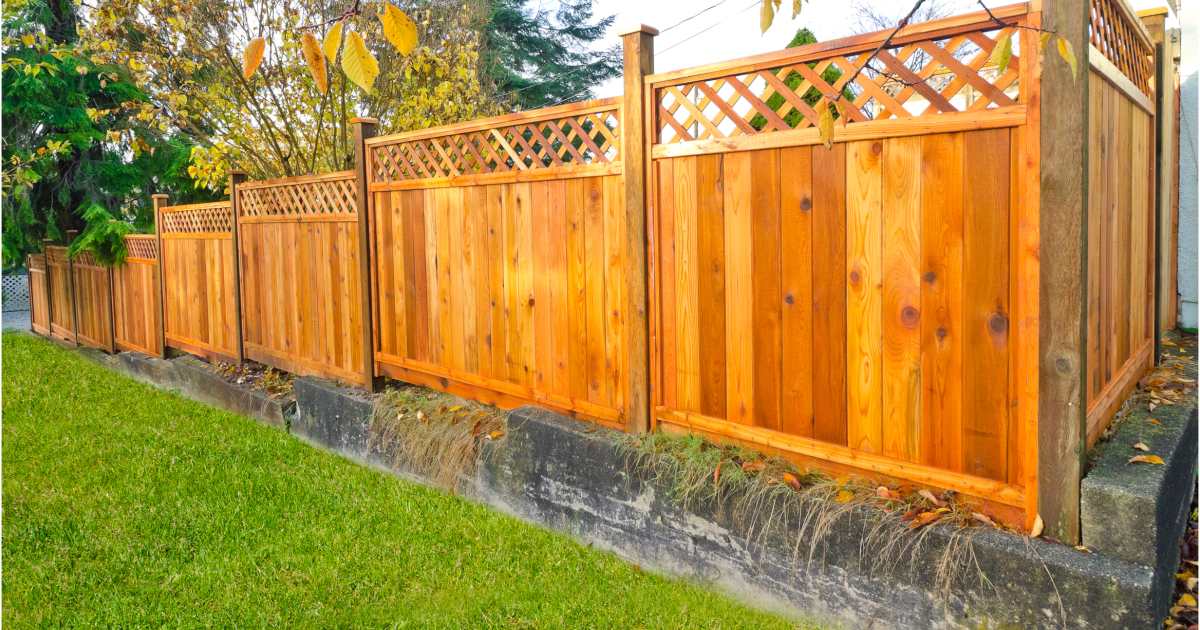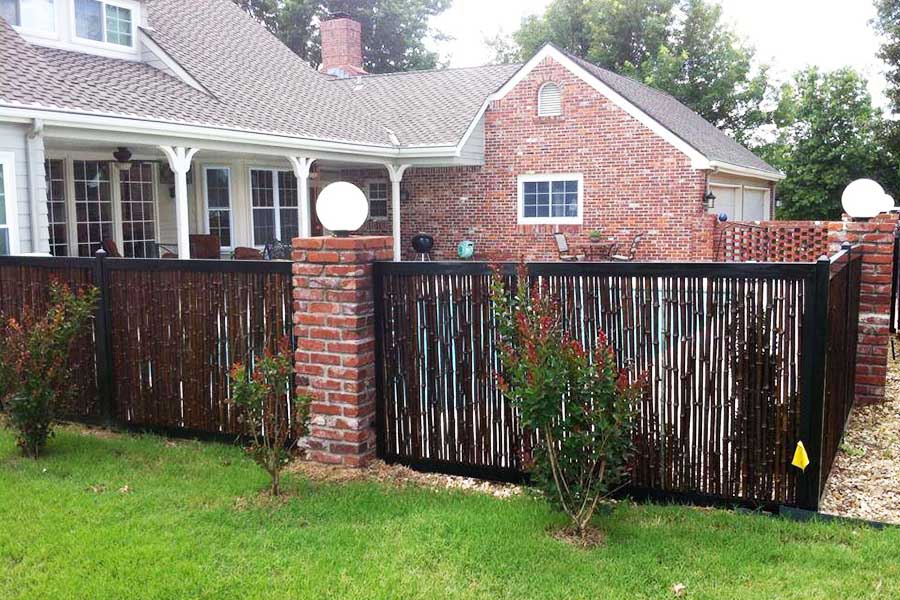All Categories
Featured
Your fence is revealed to different weather condition problems year-round, and while it offers as a crucial component of your property, it's additionally one of the most susceptible components when it comes to weather-related damage. Here are some reliable approaches to safeguard your fencing from weather-related damage.
Wood Fences: While wood is a classic choice for fence, it is at risk to warping, rot, and insect damage, especially in locations with high dampness. Pressure-treated timber or cedar is much more resilient, yet routine maintenance is vital to keep it in great problem. Plastic Secure fencing: Plastic is an excellent option for those trying to find a weather-resistant and low-maintenance fence. It's impervious to dampness, will not warp or crack in the warmth, and withstands fading from UV rays. Metal Fence: Wrought iron and light weight aluminum are resilient products for fence, yet they need a rust-resistant layer to secure them from rust due to dampness. A protective layer or normal maintenance can stop rust and prolong the life of steel fencings. Composite Fencing: Made from a blend of wood fibers and plastic, composite fencings are very resistant to weather aspects, including dampness, uv, and heat rays. This material supplies a balance of longevity and visual charm. Selecting a product matched to your environment will certainly give better security for your surround the long term.
Seal or Tarnish the Timber: Using a top notch sealer or discolor to your wood fencing produces a water resistant obstacle that avoids wetness from going into the wood. It likewise assists secure the wood from UV rays, which can trigger discoloration and drying out. Reapply Sealant Routinely: With time, the safety obstacle of your sealant or discolor can wear down. Depending upon your climate, it's an excellent concept to reapply each to two years to keep the wood safeguarded. This therapy will certainly maintain the fence's look, protect against rot, and prolong its life expectancy.
![]()
For extra protection, consider making use of wind-resistant mesh screens or panels in locations where wind is a significant issue. This added layer can help decrease the pressure that the wind exerts on your fencing.
Examine Drainage: Make sure that the ground around your fencing inclines away from the blog posts. Correct water drainage permits water to stream far from the fencing, preventing wetness accumulation. Mount Drain Solutions: In locations where water drainage is an issue, take into consideration adding a French drainpipe or gravel around the base of your fencing blog posts to reroute water far from the structure. Excellent water drainage can avoid rot, corrosion, and other types of weather-related damage.
![]()
![]()
Concrete Footings: Set fence articles in concrete to stop them from loosening up gradually due to dirt disintegration or moving ground. Steel Braces: Adding steel dental braces to fencing messages can provide extra stamina and lower the threat of breaking or leaning. Reinforcing your articles ensures that your fencing will stay in place, even throughout extreme weather.
For wood fencings, gently wash the surface with a light detergent to remove dirt and grime. For vinyl fences, make use of a soft fabric and cleansing service to stop accumulation. For steel fences, examine for rust and sand it off before using a fresh layer of paint. Verdict. Your fence is a crucial feature of your residential or commercial property, and with the ideal care, it can hold up against the challenges presented by the weather condition. By picking resilient materials, doing routine upkeep, and reinforcing powerlessness, you can shield your fencing from the components and prolong its life. Normal assessments, using protective layers, and taking steps to control moisture and wind direct exposure will assist make sure that your fencing stays strong, practical, and appealing for many years to find.
- Select Weather-Resistant Materials. The materials you pick for your fencing can have a significant impact on its ability to stand up to the elements. Various materials are better equipped to take care of particular climate condition. Right here's a failure of exactly how numerous materials stand up versus the weather condition:
Wood Fences: While wood is a classic choice for fence, it is at risk to warping, rot, and insect damage, especially in locations with high dampness. Pressure-treated timber or cedar is much more resilient, yet routine maintenance is vital to keep it in great problem. Plastic Secure fencing: Plastic is an excellent option for those trying to find a weather-resistant and low-maintenance fence. It's impervious to dampness, will not warp or crack in the warmth, and withstands fading from UV rays. Metal Fence: Wrought iron and light weight aluminum are resilient products for fence, yet they need a rust-resistant layer to secure them from rust due to dampness. A protective layer or normal maintenance can stop rust and prolong the life of steel fencings. Composite Fencing: Made from a blend of wood fibers and plastic, composite fencings are very resistant to weather aspects, including dampness, uv, and heat rays. This material supplies a balance of longevity and visual charm. Selecting a product matched to your environment will certainly give better security for your surround the long term.
- Routinely Treat Wooden Fencings. If you have a wooden fencing, protecting it from wetness, temperature level, and sunshine variations is important. Wood can take in moisture from rain, snow, or moisture, causing it to rot and wear away. Here's exactly how you can protect wooden fencings:
Seal or Tarnish the Timber: Using a top notch sealer or discolor to your wood fencing produces a water resistant obstacle that avoids wetness from going into the wood. It likewise assists secure the wood from UV rays, which can trigger discoloration and drying out. Reapply Sealant Routinely: With time, the safety obstacle of your sealant or discolor can wear down. Depending upon your climate, it's an excellent concept to reapply each to two years to keep the wood safeguarded. This therapy will certainly maintain the fence's look, protect against rot, and prolong its life expectancy.

- Install Windbreaks. Solid winds can create substantial damages to fencings, particularly those made of lightweight products or tall frameworks. These natural obstacles can help disperse wind, avoiding direct gusts from harming your fencing.
For extra protection, consider making use of wind-resistant mesh screens or panels in locations where wind is a significant issue. This added layer can help decrease the pressure that the wind exerts on your fencing.
- Guarantee Appropriate Drain Around Your Fence. Standing water is one of the leading causes of fencing damages, especially for wood fences. Water can compromise the fencing posts, creating them to rot and deteriorate a lot more swiftly. To avoid this:
Examine Drainage: Make sure that the ground around your fencing inclines away from the blog posts. Correct water drainage permits water to stream far from the fencing, preventing wetness accumulation. Mount Drain Solutions: In locations where water drainage is an issue, take into consideration adding a French drainpipe or gravel around the base of your fencing blog posts to reroute water far from the structure. Excellent water drainage can avoid rot, corrosion, and other types of weather-related damage.

- Trim Overhanging Branches and Vines. Trees and plants near your fence might seem like an attractive enhancement, however they can pose risks when left untreated. Looming tree branches and vines can cause damages to your fence throughout storms or high winds. Furthermore, vines can trap wetness versus wooden fences, quickening the decaying process. To shield your fence, trim any type of branches or plants that hang over or near the fencing on a regular basis. This will minimize the opportunity of dropping particles and protect against wetness buildup.
- Strengthen Fencing Posts. Fence articles are vulnerable to changing, leaning, and rotting, specifically during durations of severe weather condition. If your fencing is in a location that experiences high winds or ices up during wintertime, it's vital to enhance the blog posts to keep stability.

Concrete Footings: Set fence articles in concrete to stop them from loosening up gradually due to dirt disintegration or moving ground. Steel Braces: Adding steel dental braces to fencing messages can provide extra stamina and lower the threat of breaking or leaning. Reinforcing your articles ensures that your fencing will stay in place, even throughout extreme weather.
- Regular Assessments and Maintenance. Normal examinations are crucial for determining early signs of weather-related damages. Check your fence after tornados or heavy rainfall to look for concerns such as loosened boards, sagging posts, or rusted locations. Early detection of minor problems can save you from expensive repair work later. In addition, cleansing your fencing periodically assists preserve its condition. :
For wood fencings, gently wash the surface with a light detergent to remove dirt and grime. For vinyl fences, make use of a soft fabric and cleansing service to stop accumulation. For steel fences, examine for rust and sand it off before using a fresh layer of paint. Verdict. Your fence is a crucial feature of your residential or commercial property, and with the ideal care, it can hold up against the challenges presented by the weather condition. By picking resilient materials, doing routine upkeep, and reinforcing powerlessness, you can shield your fencing from the components and prolong its life. Normal assessments, using protective layers, and taking steps to control moisture and wind direct exposure will assist make sure that your fencing stays strong, practical, and appealing for many years to find.
Latest Posts
Stress-Free Birthday Celebration Event Preparation at FunCity Hotel
Published Apr 20, 25
1 min read
Don't Neglect These Indicators: Is Your Roofing Trying to Tell You Something?
Published Apr 20, 25
1 min read
Discover the Perfect Carpeting for Your Home
Published Apr 19, 25
1 min read
More
Latest Posts
Stress-Free Birthday Celebration Event Preparation at FunCity Hotel
Published Apr 20, 25
1 min read
Don't Neglect These Indicators: Is Your Roofing Trying to Tell You Something?
Published Apr 20, 25
1 min read
Discover the Perfect Carpeting for Your Home
Published Apr 19, 25
1 min read